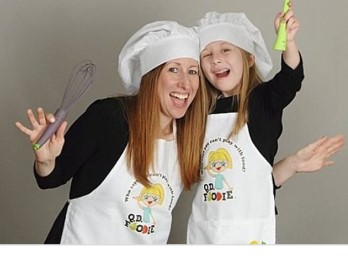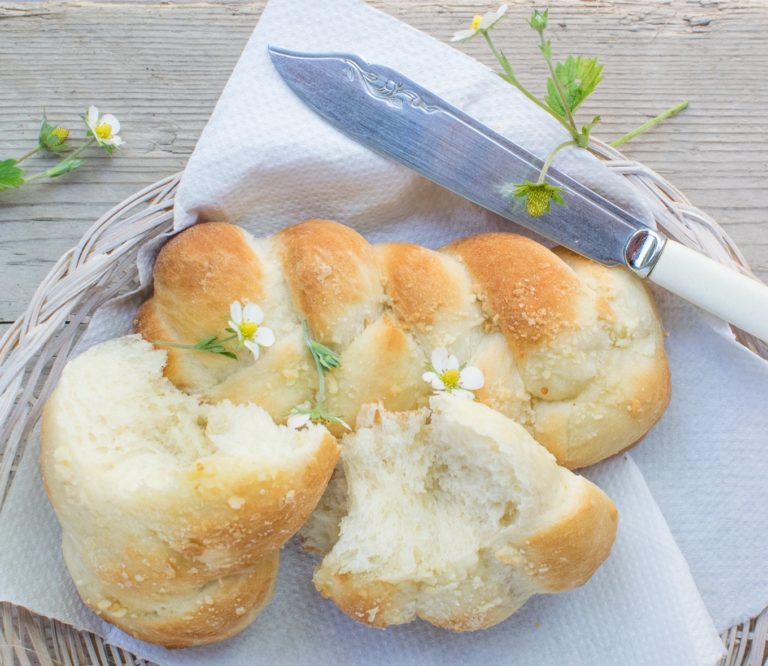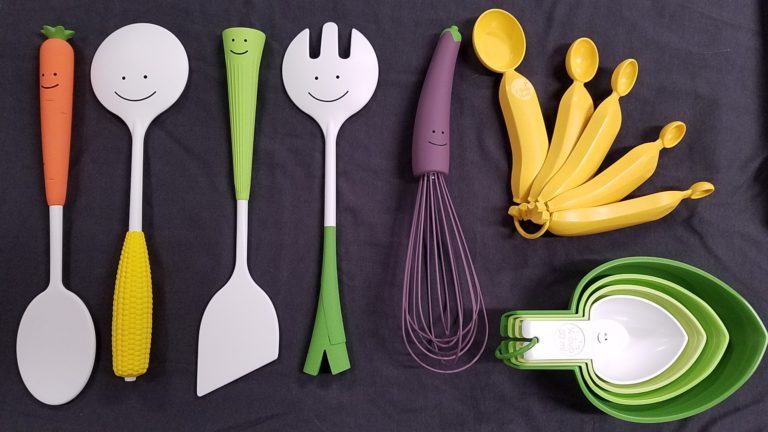Marci Heit, Founder of Q.D. Foodie, Shares Tips for Selecting Child-Friendly Utensils to Get Kids Cooking


Marci Heit, professional voiceover artist and mother, is the founder of Q.D. Foodie, an innovative line of inclusive kitchen utensils featuring smiling veggies. Featuring sensory-friendly grips, bright colors and Braille, the tools aim to be inclusive and welcoming for all, and are especially helpful for children, and particularly those who are visually impaired or have other disabilities.
We asked Marci to share her insights into getting kids involved with cooking, helping expand their palettes, and using Monday as a day to reset and get on a healthier track.
With many competing priorities, what is your advice to parents that say they don’t have enough time to cook with their kids?
Bring the kids into your world. Eating is a must, and when we have so many priorities, as we all do, we need the fuel to get everything done. Kids can be incredible helpers, and even though there may be a learning curve, it’s worth the effort on this one.
Whether it’s taking out the ingredients, contributing to menu ideas, becoming sous chefs, or even the master chef of the household, there is a role for everyone. Children are more likely to try food they prepare, so it’s a great opportunity to help your picky eaters become less picky. Getting the kids involved in cooking allows for more time to make healthier and more balanced meals, get them on the table, and eaten, too! Win, win, and win! So what’s a parent to do, if the kids are not interested, when time is already limited? It’s still worth a try! If sports are their thing, make prep time competitive. If art is what’s on their minds, have them plate the food as beautifully as they like. If they live and breathe music, they can be in charge of the playlist. Cleaning up is a part of the program, too, so don’t forget to bring them into that as well! With helpers to put the leftovers away and to wash and dry the dishes, maybe you’ll even get to sleep a little earlier.
How can having the right utensils help involve kids in meal prep? What are some things to look for when selecting utensils and kitchen tools for family cooking?
Kids love being able to do what their parents are doing, what their older siblings are doing, etc., so utensils that fit comfortably in any size hands will help get the job done, building confidence in the kitchen and beyond. Choose tools that they want to use, ones where they’ll request to do specific tasks, because they know they’ll get to use the utensils they enjoy.
Why is Monday a good day to cook and eat meals together?
Mondays, as the beginning of the week, set the tone for the rest of the week. Children who eat with their families regularly are more likely to be well-adjusted and have good manners and strong communication skills. This can make a huge difference in the quest for a good week, a happy month, and a productive year. If you are short on time, see if doing some prep over the weekend could work for your crew. Use it as an opportunity to make things that can last for more than one meal or be repurposed into another day’s meal. Slow cooker recipes are also fantastic options.
Why should families prioritize taking time to cook and eat dinner together whenever possible? What are some benefits associated with this?
On the surface, it’s simply a nice thing to cook and eat together as a family. And that’s amazing! But it actually goes much deeper than that, though, with countless studies showing what else is to be gained. For example, a Brigham Young University study found that sitting down to a family meal helps working moms reduce the tension and strain from long hours at the office. Columbia University’s CASA found that teens who have between five and seven family dinners per week are more likely to confide in their parents and are twice as likely to get top grades, compared to those teens who have fewer than three family dinners per week.
What’s your favorite recipe to prepare as a family? How are the right tools important in this recipe to involve kids in the process?
We love to bake bread, and we do it at least once a week. Baking is science, and with science, we need to be precise. So for our bread recipe, we have our measuring cups and spoons ready at all times. We use a stand mixer with a dough hook to mix, but you can also knead dough by hand (the original kitchen utensils). It’s definitely more time consuming, but it’s a really fun family activity. My daughter likes to take some dough for herself and form it into something she’s learning about in school that week. I’m excited to share this bread recipe, because of its versatility. The first time I ever made it, I did breadsticks. The next time, we made braided loaves. Our favorite way to make this now is pull-apart garlic knots. Yum!
Next Monday, try Marci’s recipe for bread with your whole family!


Homemade Bread
YIELD: One 9-inch round pull apart or 18 breadsticks or 2 medium loaves
INGREDIENTS
- 1 cup warm water
- 3 tablespoons brown sugar
- 1 teaspoon salt
- 1⁄4 cup oil
- 3 cups bread flour
- 2 1⁄2 teaspoons yeast
DIRECTIONS
Preheat oven to 375F.
Combine yeast and water. Let set until frothy.
Add remaining ingredients.
Mix dough using your favorite method—bread machine, mixer, or by hand.
Line pan with parchment paper.
Form dough into any shape you like and place in baking pan.
(Note: Very small pieces, as kids are sometimes inclined to form, do not cook quite as well. You should have a minimum size of a tennis ball for the best loaf results. Breadsticks should be the minimum size of a magic marker.)
Let rise for at least 20 minutes, or more, if you have time.
Bake for 10 minutes.
Brush with olive oil or melted butter. Sprinkle with garlic powder and sea salt, or try parmesan cheese or herbs.
Bake for an additional 5-10 minutes or until golden brown on top.
Enjoy!
